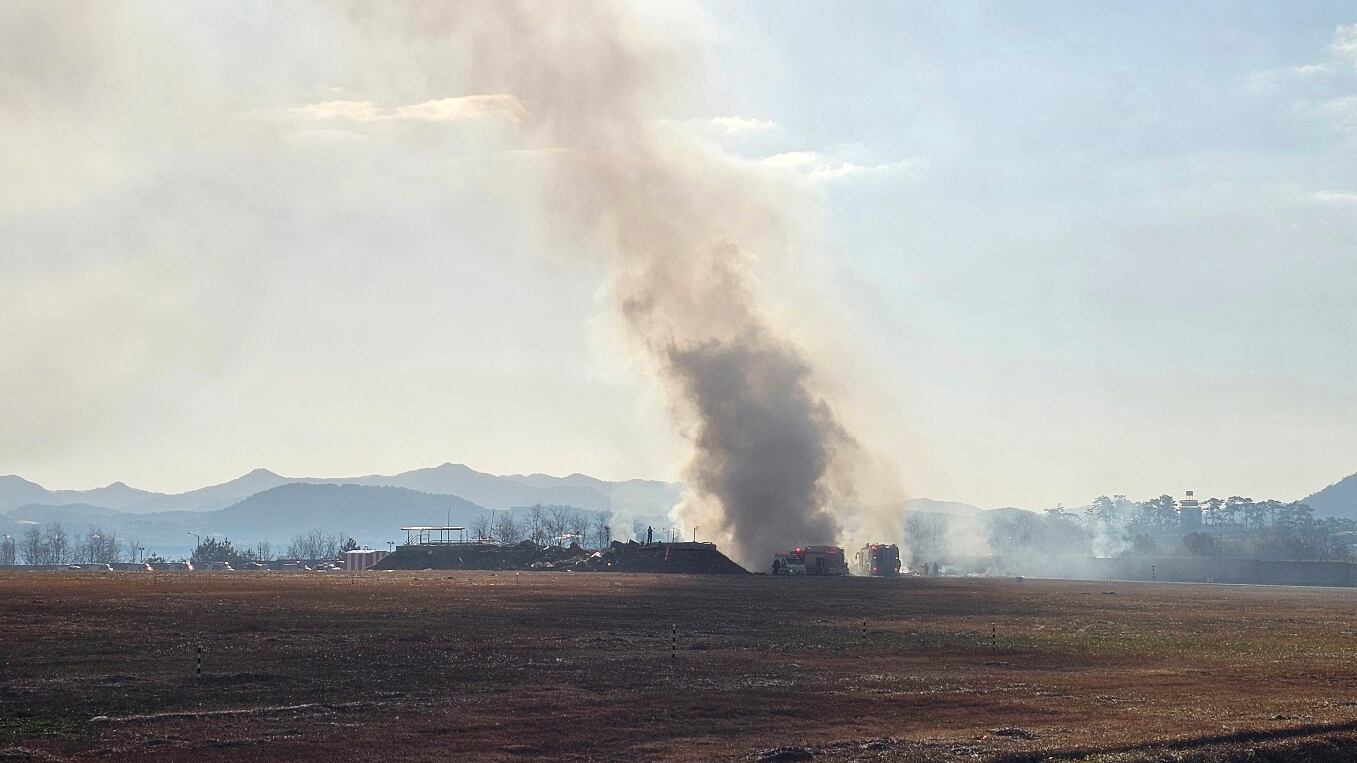SEOUL, South Korea (AP) — A passenger plane caught fire on Sunday morning after skidding off the runway at a South Korean airport and crashing into a concrete wall when its front landing gear apparently did not deploy: 179 of the 181 people on board died in the plane crash, one of the worst in the country’s history.
Jeju Air's passenger plane crashed while landing in the town of Muan, about 290 kilometers (180 miles) south of Seoul. The Ministry of Transport reported that the plane was a 15-year-old Boeing 737-800 returning from Bangkok and the accident occurred at 9:03 AM.
PUBLICIDAD
The death of 179 people was confirmed—85 women, 84 men, and 10 other individuals whose gender could not be identified at the moment—lost their lives in the fire, reported the South Korean fire agency. Rescuers pulled out two crew members. Health officials said they are conscious and their lives are not in danger.
The passengers were mostly South Koreans, as well as two Thai citizens.
How did the plane crash occur in South Korea?
Footage from the accident broadcasted by South Korean television networks showed the moment when the Jeju Air plane was sliding on the runway, apparently with its landing gear still closed, veering off and crashing head-on into a concrete wall on the airport's periphery, triggering an explosion.
Lee Jeong-hyeon, chief of the Muan fire station, said in a televised briefing that the plane was completely destroyed, only the tail was recognizable. Lee added that workers were examining several possibilities regarding what caused the crash, including the possibility that the plane may have collided with birds.
Subsequently, officials from the Ministry of Transportation said that their initial evaluations of communication records show that the airport control tower issued a bird strike warning to the plane shortly before it attempted to land and gave the pilot permission to land in a different area.
The pilot sent a distress signal just before the aircraft veered off the runway and slid through a buffer zone before crashing into the wall, officials indicated.
What did they say in the airline of the crashed plane?
In a statement, Jeju Air expressed its "deep apology" for what happened and said that it will make its "utmost effort to handle the aftermath of the accident."
During a televised press conference, Kim E-bae, president of Jeju Air, made a deep bow along with other top company officials as he apologized to the grieving families and said he feels "fully responsible" for the incident.
Kim said that the company had not identified any mechanical issues with the plane after regular inspections and that she would await the results of the government's investigations into the cause of the incident.
It is one of the deadliest disasters in the history of South Korean aviation. The last time the country suffered a large-scale air disaster was in 1997, when a Korean Airlines plane crashed in Guam and 228 people on board died. In 2013, an Asiana Airlines aircraft made an emergency landing in San Francisco, resulting in three deaths and around 200 injuries.
Sunday's crash was also one of the worst accidents in a landing since the one in July 2007, in which 187 people on board and another 12 on the ground died when an Airbus A320 skidded off a slippery runway in Sao Paulo and crashed into a nearby building, according to data compiled by the Flight Safety Foundation.
The incident occurred at a time when South Korea is immersed in a huge political crisis triggered by the surprising imposition of martial law by President Yoon Suk Yeol and his subsequent removal. Last Friday, South Korean lawmakers removed interim President Han Duck-soo, leading Vice Prime Minister Choi Sang-mok to assume the position.
